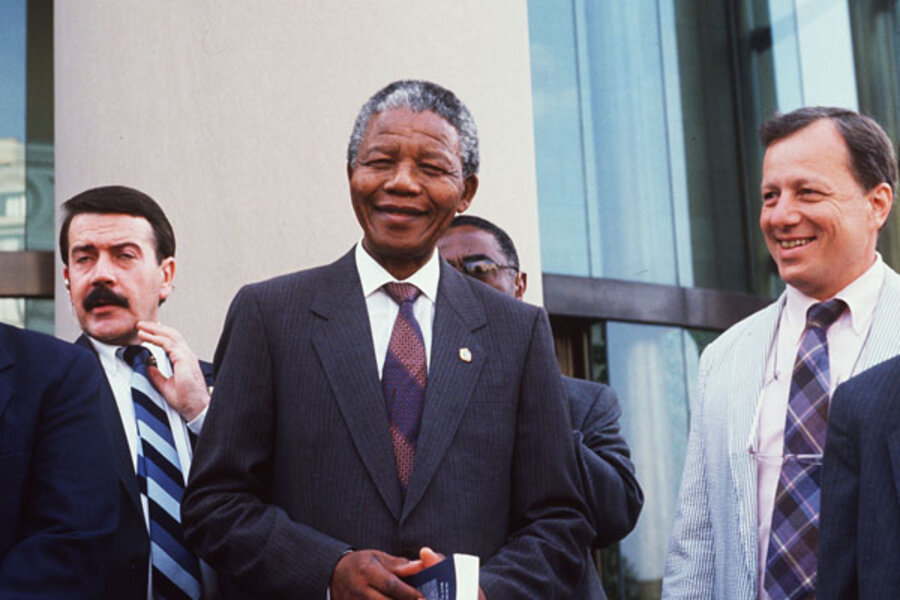In 1999, Mandela made history again, this time by stepping down after only one term as president. The decision set the stage for a second peaceful transition in South Africa, from one democratically elected government to another. As Monitor writer John Battersby wrote of his presidency,
Mandela's unique style in reaching out to whites while stressing the need for black empowerment has been key to a relatively peaceful transition from apartheid to black majority rule.
In balancing these potentially explosive forces, Mandela has laid the foundation for the next stage of the transition - a real transfer of economic power to blacks and a more rapid Africanization of the civil service and other institutions.
But the end of his presidency also marked a moment of crisis for Mandela the man, Battersby wrote.
The question that has always fascinated me is: Who is Nelson Mandela? I once was alone with him on his private jet to Durban. After gazing out the window for a time, he began to speak about himself with a sense of detachment. It was as though he, too, wanted to know who this Nelson Mandela was, and what would happen to him when he relinquished his post as president of the country and the ANC.
For South Africa too, it was a fraught moment. "Nelson Mandela is a saint. But in a weird sense, it will be a relief when Mandela leaves," a political analyst told the Monitor in 1999. "For too long we have been treated as this abnormal nation with this great, moral leader, this icon. But we have to normalize."








